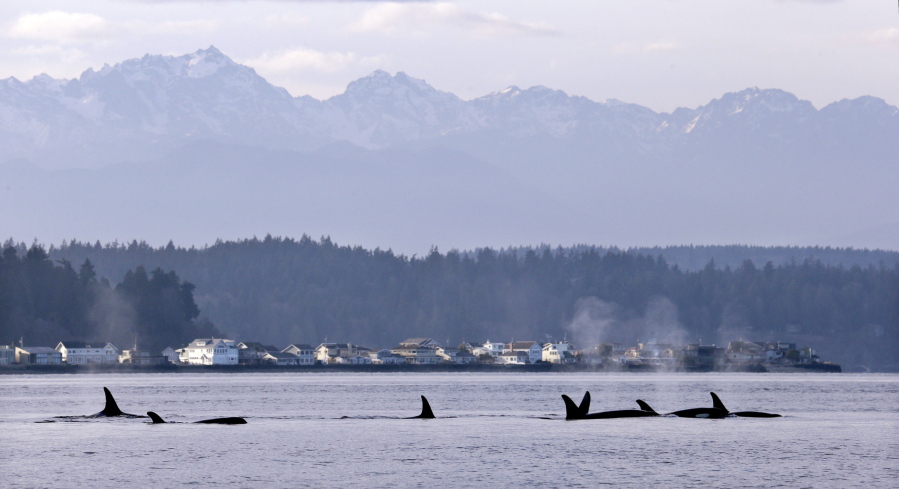SEATTLE — With scientists warning that the Northwest’s beloved killer whales are on the brink of extinction, Washington Gov. Jay Inslee announced dramatic plans Thursday to help the population recover — including $1.1 billion in spending and a partial whale-watching ban.
“We are undertaking a herculean effort to save these iconic creatures,” Inslee said in a prepared statement. “It will take action at every level of the environment across our entire state.”
Starved by a dearth of salmon, poisoned by contaminants, and buffeted by vessel noise that hinders their hunting and communication, the orcas that live in the waters between Washington state and Canada’s Vancouver Island have failed to reproduce successfully in the past three years. One grieving whale carried her dead calf on her head for 17 days last summer in an apparent effort to revive it.
There are 74 left in the population, the lowest number since the 1970s, when hundreds of orcas were captured in the region and more than 50 were kept for aquarium display.
Inslee, who is mulling a presidential run in 2020, detailed the plans in his announcement of his priorities for the 2019-2021 state budget. The money would go toward protecting and restoring habitat for salmon, especially chinook, the orcas’ favored prey; boosting production from salmon hatcheries; storm-water cleanup; and quieting vessel traffic.
Nearly $300 million would go toward complying with a court order that requires the state to replace culverts that block the path of migrating salmon.
Money would also support developing plans to move or kill seals and sea lions that feast on Columbia River salmon where they get blocked by dams or other structures, and changing state water quality standards to allow more water to be spilled over dams, helping young salmon reach the ocean.
Inslee called for a new capital gains tax and an increase in business taxes to help cover the tab.
The governor also said he intends to ban commercial whale-watching of the local endangered orcas — known as the southern residents — for three years. He stressed that whale-watching will be allowed for other whales in Washington waters, including nonresident orcas that pass through, and that the state would undertake efforts to promote the industry to offset any lost business.
Inslee said he intended to permanently double the size of the “no-go zone” for vessels around orcas to 400 yards and create a “go slow zone” with reduced speed limits within a half-mile. The Department of Fish and Wildlife would get $1.1 million for public education and enforcement.
His plans call for converting two state ferries to quieter electric hybrids and building two others as hybrids.
In a written statement, the Pacific Whale Watch Association did not directly address the proposed ban on whale watching. It said it is committed to protecting the whales and that it supports “science-based actions that will best support the future of these whales, including go-slow zones aimed at quieting the waters.”



